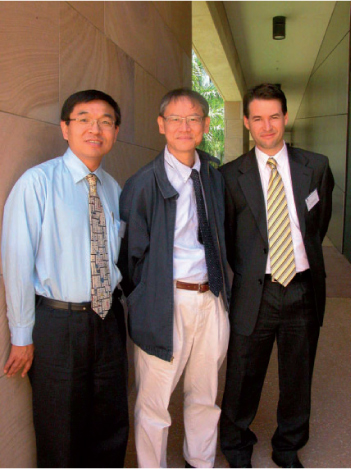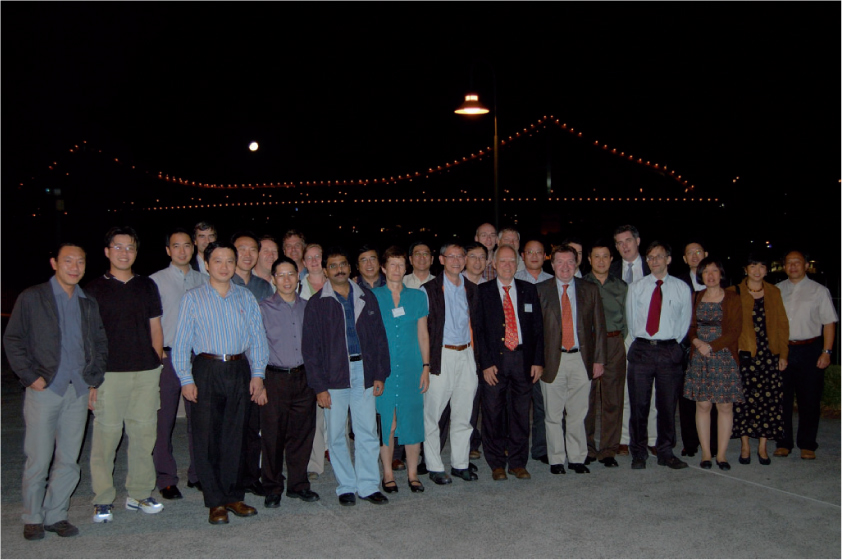University of Queensland–National University of Singapore Joint Symposium
Craig Williams AA
Australian Journal of Chemistry 62(9) 949-950 https://doi.org/10.1071/CH09389
Published: 17 September 2009
Dear AJC Readership,
It was with great pleasure that I accept the chance to provide an introduction to this month’s special issue of The Australian Journal of Chemistry – an International Journal for Chemical Science to mark the University of Queensland–National University of Singapore (NUS) joint symposium (SAuCCCS-2) held in 2008 on the 15th and 16th of December.
This event arose as part of a reciprocate initiative to the Singapore–Australia event held at the National University of Singapore in November 2006, to engage and encourage scientific exchange between the two countries. Since this inaugural event, many Australian chemistry departments and schools have grasped the welcomed opportunity to interact with the NUS Chemistry Department led by Professor Andy Hor (Fig. 1). There is an overwhelming feeling that the bilateral network is growing at an exponential rate and, to paraphrase Professor Hor, the Singapore–Australia chemistry network has grown steadily in recent months – thanks to the two SAuCCCS symposia that have been conducted.

|
The current issue of Australian Journal of Chemistry has captured the flavour of the meeting held in December last year, which had over 35 oral presentations in the areas of organic chemistry, inorganic chemistry, organometallics, materials, nanotechnology, chemical education, medicinal chemistry, theoretical and computational chemistry, and surface chemistry. This wide array of chemistry brought to the forefront discussion from all quarters and enlightened post-graduates suggesting to the Australian Journal of Chemistry Editor-in-Chief and Commissioning Editor (Professors Curt Wentrup and Andy Hor, respectively) that this was the type of chemical gathering (Fig. 2) worthy of communication to the AJC Readership.

|
To touch on the contents of the issue, both full papers and communications have been included covering areas such as heterocyclic carbene (Hor et al.[1]) and dicarbene complexes (Huynh and Seow[2]); unrestrained molecular dynamics simulation of biomolecules (Smith et al.[3]); vaccine candidates and delivery (Toth et al.[4]); reactive intermediates and unusual molecules (Wentrup et al.[5]); molecular modelling (Ran and Wong[6]); nanowires and nanotubes (Gu et al.[7]); drug discovery (Stoermer et al.[8]) and combinatorial library design (Chang et al.[9]); asymmetric catalysts (Ng and Jaenicke[10]) and synthesis (Zhu and Lu[11]); nanoparticles (Zhao et al.[12]); solid support (Zhong and Chuah[13]) and template synthesis (Lindoy et al.[14]); natural product total synthesis (Williams et al.[15]); and bio inorganic (Sreenivasulu[16]).
It is with upmost certainty that I believe the chemical relationship between the two countries will continue to grow rapidly on all manner of fronts. For example, academic visits, student exchanges and co-supervision, joint symposia and conferences, collaborative research and teaching, and so on. Interactions such as these lead to innovation, and innovation leads to new technologies and practices.
I very much hope you enjoy this issue of Australian Journal of Chemistry as much as we have enjoyed recent interactions with our close neighbours.
Sincerely,
Craig Williams
School of Chemistry and Molecular Biosciences
University of Queensland
Brisbane, 4072, Qld, Australia
Email: c.williams3@uq.edu.au
[1]
S. K. Yen,
L. L. Koh,
H. V. Huynh,
T. S. A. Hor,
Aust. J. Chem. 2009, 62, 1047.
| Crossref | GoogleScholarGoogle Scholar |
| Crossref | GoogleScholarGoogle Scholar |
| Crossref | GoogleScholarGoogle Scholar |
| Crossref | GoogleScholarGoogle Scholar |
| Crossref | GoogleScholarGoogle Scholar |
| Crossref | GoogleScholarGoogle Scholar |
| Crossref | GoogleScholarGoogle Scholar |
| Crossref | GoogleScholarGoogle Scholar |
| Crossref | GoogleScholarGoogle Scholar |
| Crossref | GoogleScholarGoogle Scholar |
| Crossref | GoogleScholarGoogle Scholar |
| Crossref | GoogleScholarGoogle Scholar |
| Crossref | GoogleScholarGoogle Scholar |
| Crossref | GoogleScholarGoogle Scholar |
| Crossref | GoogleScholarGoogle Scholar |
| Crossref | GoogleScholarGoogle Scholar |
| Crossref | GoogleScholarGoogle Scholar |
| Crossref | GoogleScholarGoogle Scholar |



